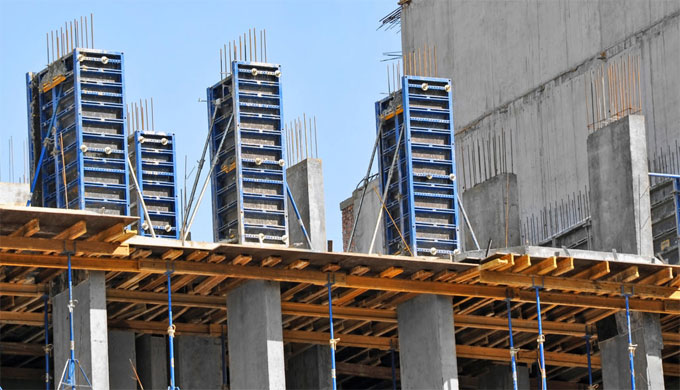
Some best formwork methods

Formwork means the temporary or permanent molds which are applied to retain wet concrete unless it gets cured. It is a vital component in concrete construction as without formwork the schedule, labor requirements, quality and total cost of a project are significantly impacted.
In due course of time, formwork molds have changed from conventional job-built timber to pre-engineered systems comprising of a combination of steel, aluminum, manufactured timber, plywood and plastics.
These improvements in formwork molds make the jobsite production & safety better, with fewer labor, whereas creating a superior finished product.
Walls?Now-a-days, steel-framed, wood-faced panels, which need consumable ties at 2-feet-on-center and one connection per square foot, are extensively used for handset wall forming. These are substituted with larger, two-person handset systems which need less labor and get rid of consumable purchases due to reusable taper ties.
In recent times, clamp connection forms having wood or plastic form faces that offer tremendous labor savings in assembly, are utilized. Assembly and reconfiguration of these standard systems to satisfy changeable structure dimension takes place instantly, and also offers a consistent concrete finish.
Slabs?The application of fixed or tailor-made wood posts, stringers and joists is still considered as the most common method of shoring of slabs. This method delivers from generation to generation and considerable labor is required for that. Since, the posts are arranged as close as 2-feet-on-center, construction sites turn out to be very congested.
A new construction method that highlights engineered lumber and metal posts raise the post spacing up to 5 feet by 10 feet and suggests components which are systematic and can be reprocessed. This increases spacing and facilitates less material on site to develop the same slab area. Less material leads to lowered handling requirements, less labor to arrange and strip the formwork, fewer transport costs, and an improve overall job site productivity.
The existing method for gang-forming slabs applied trusses or structural decks based on significant amount of time for assembly and disassembly. Besides, this method requires a huge amount of crane time, thus accelerating the time for resetting a suitable operating method. The customer should also purchase the plywood facing and often restore it several times on the same project.
Gang-forming slabs are commonly found on the structures with height in excess of 15 stories with the purpose of reducing cost. To provide a greater solution to these types of systems, smaller tables are arranged to the job site fully assembled with plywood especially for mid-rise buildings where gang-forming was not inexpensive earlier.
The formwork-lifting elevators affixed to the exterior of a building that facilitates all formwork to be cycled from floor to floor devoid of requiring a crane to decrease job site crane time & formwork labor requirements. These table-lifting systems are applied along with the smaller table method and also allow for other construction material like handset shoring, vertical formwork and reshores from below to cycle from floor to floor with a crane.
How to choose the exact formwork
Structural engineers should be aware that concrete contractors carry out a detailed analysis of available formwork solutions to arrange the best system for the construction project since conditions differ for each individual project, there is no simple formula for the selection of the proper formwork supplier or system.
Generally, formwork should include 40- to 60-percent of the total cost of a building?s structural concrete frame. For concrete walls, the cost remains 50- to 60-percent range. These percentages involve the cost of material and labor, with the largest cost being for labor. It is vital to analyze the labor costs comprehensively since it is the higher expenditure and is that amount is decreased, it offers superior effect on the bottom line.
To provide the most effective solution for a project, a contractor will calculate different forming systems. Since the scarcity of available and capable labor continues, it has become even more important to opt for proper forming system. So, there are two options for a contractor - a low-priced forming material that is labor-intensive or a forming system that is costly but offer high productivity.


